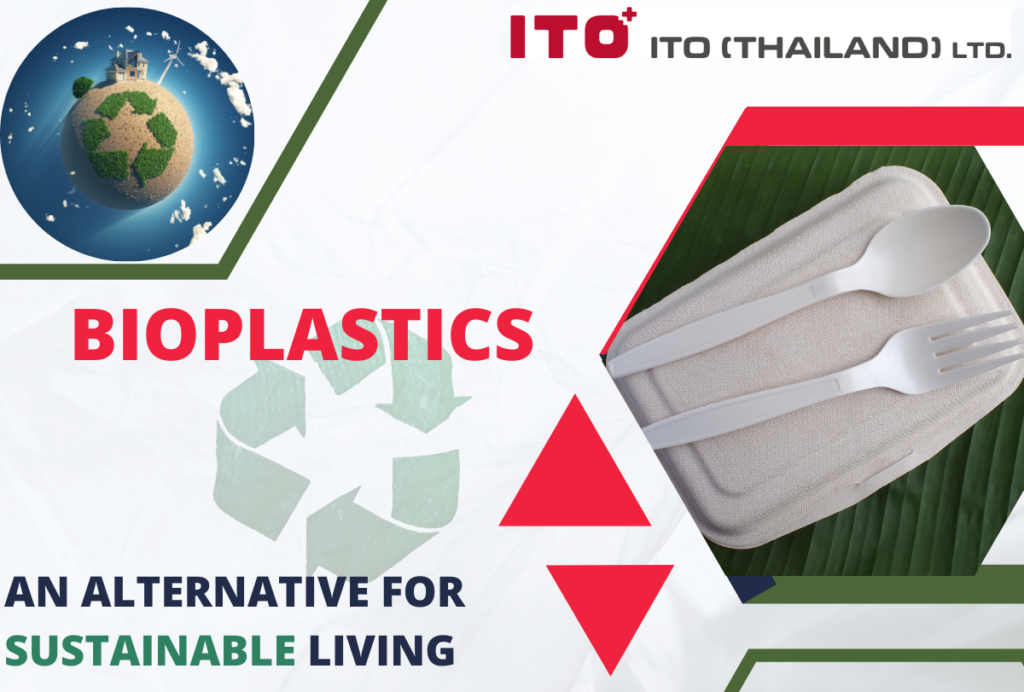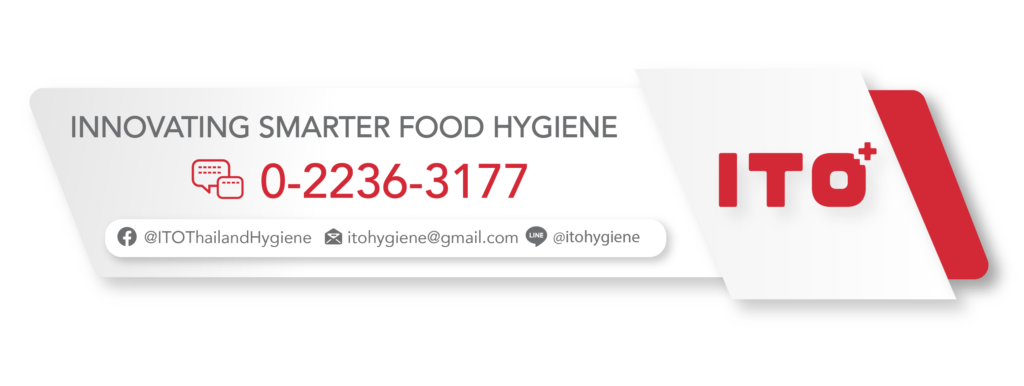ITO Thailand Hygiene Blog
Bioplastics
Recently only 9% of plastic wastes were successfully recycled, whereas 22% is mishandled (OECD, 2022) and these numbers have raised concerns amongst researchers throughout the world. The COVID-19 pandemic has accelerated the use of more packaging for food products in regard to safety concerns and it is important for manufacturers to switch to an eco-friendlier alternative such as packaging materials made from PLA bioplastic. An introduction to PLA material, its potential opportunities in the food industry, its benefits, drawbacks, safety issues, and sustainability will be discussed in this blog.
What is PLA?
Polylactic acid (PLA) is a biodegradable polyester or thermoplastic derived from plant material such as corn, cassava, maize, and is ubiquitous in numerous industries such as biomedicine (Casalini et al., 2019), agriculture (Auras et al., 2010), and food packaging (BioPak, 2019), and it was determined to be degraded within 6-12 months. PLA is considered as ‘green’ material as it uses 65% less energy in production and emits 68% fewer greenhouse gases when compared with traditional plastics and toxins were not detected (TWI, 2022). Despite it is being environmentally friendly, the degradation process barely occurred in ambient temperatures as it requires specific disposal procedures, including recycling, composting, incineration, and landfill (TWI, 2022).
Opportunities in the Food Industry
The COVID-19 pandemic has boosted the demand of PLA with an estimated market growth of 26% during 2022-2030 for a wide range of use, and some of the most common applications in the food industry are disposable cutleries and food containers. PLA products are considered aesthetically pleasing in addition to its beneficial features such as oil resistant surfaces, durability, and considerable printability (Grand View Research, 2022). It is commonly combined with other materials such as PET to increase its flexibility, and for cost reduction, thus, unfortunately, making it becomes less environmentally friendly (ARC, n.d.).
Benefits, Drawbacks and Safety Issues
As previously mentioned, it is made from renewable raw materials, so this means less hassle for material sourcing and more convenient for producers to maintain their production schedule. Next, it can be easily processed with a lower melting point when compared with other fossil-based plastics, thus it is often used as raw materials for food packaging products, and for extrusion (Barrett, 2020), and the most important, it is biodegradable with minimal environment impact, and left no toxic residue, so the use in food packaging is reliable and safe to utilise with various type of foods.
However, it is more expensive than other types of plastic used in the food industry. Besides, it is not unconditionally compostable as an industrial composting operation is required as it needs an appropriate process in order to be completely managed (Krieger, 2019). It is impossible to dispose of PLA in the sea and expect it to be degraded on its own as a proper waste management system is still necessary. PLA material can be found in everyday items such as food packaging, shrink wraps, or plastic bottles and consumers have questioned whether manufacturers can confirm the safety of PLA, especially when used as food contact materials. Generally, PLA is ‘Generally Recognised As Safe’ (GRAS) and safe for its intended uses (Conn et al., 1995), which is a term used to ensure the safety of PLA for food. Interestingly, its safety could be compromised when PLA is used for 3D printing material because there is a risk of cross-contamination with other residues of non-food safe material in the printer hot end, as well as lead contamination from brass nozzles in most 3D printers. So, stainless steel nozzles are more preferable as it is easier to clean and can avoid the risk of toxicity of thermal decomposition of material such as PTFE (Johnson-Hall, 2022).
PLA and Sustainability
As mentioned in the previous blog, sustainability determines the impact on future generations, so researchers are finding an alternative source of plant for PLA manufacturing instead of corn and maize. In Thailand, a cooperation between NatureWorks (PLA manufacturer) and ABB (automation company) are producing PLA from an abundantly available plant in Thailand, sugar cane (Holbrook, 2022). It is expected to produce 75,000 tons of Ingeo (PLA biopolymer) annually, making a more sustainable food packaging line up including coffee capsules, tea bags, and food containers. Along with other biodegradable plastics (E.g., PHA, starch blends, etc.), they are forecasted to reach 5.3 million tonnes of production capacity in 2026 from 1.5 million tonnes in 2021 (European Bioplastics, 2021). In Spain, AIMPLAS extracts starch from the avocado seed for barrier film, waste avocado skin and flesh for PLA packaging, which can increase food shelf life by 15% as well as reduce the oxygen transmission rate (OTR), results in oxidation prevention (Nagal, 2021).
It is shown that PLA packaging heavily contributes to a biodegradable plastics production and offers several useful applications for consumers as well. Currently, there are some knowledge gaps as it is conditionally compostable, and a high cost may limit the use towards the plastic industry. ITO Thailand supports an innovative food solution, and we are looking forward to the day that bioplastic from PLA can be unconditionally compostable with a cost-efficient procedure.
References
ARC. (n.d.). Industry Report: The use of PLA for food packaging in Australia. University of Tasmania. Retrieved September 25, 2022, from https://www.utas.edu.au/__data/assets/pdf_file/0007/1361833/CFSI_program2_PLA-use-in-packaging-report.pdf
Auras, R., Lim, L. T., Selke, S. E. M., & Tsuji, H. (Eds.). (2010, September 15). Poly(Lactic Acid). Poly(Lactic Acid): Synthesis, Structures, Properties, Processing, and Applications. https://doi.org/10.1002/9780470649848
Barrett, A. (2020). Advantages and Disadvantages of PLA. Bioplastics News. Retrieved September 22, 2022, from https://bioplasticsnews.com/2020/06/09/polylactic-acid-pla-dis-advantages/
BioPak. (2019). What is PLA? Retrieved September 22, 2022, from https://www.biopak.com/au/resources/what-is-pla
Casalini, T., Rossi, F., Castrovinci, A., & Perale, G. (2019, October 11). A Perspective on Polylactic Acid-Based Polymers Use for Nanoparticles Synthesis and Applications. Frontiers in Bioengineering and Biotechnology, 7. https://doi.org/10.3389/fbioe.2019.00259
Conn, R., Kolstad, J., Borzelleca, J., Dixler, D., Filer, L., Ladu, B., & Pariza, M. (1995, April). Safety assessment of polylactide (PLA) for use as a food-contact polymer. Food and Chemical Toxicology, 33(4), 273–283. https://doi.org/10.1016/0278-6915(94)00145-e
European Bioplastics. (2021). BIOPLASTICS MARKET DEVELOPMENT UPDATE 2021. Retrieved September 26, 2022, from https://docs.european-bioplastics.org/publications/market_data/Report_Bioplastics_Market_Data_2021_short_version.pdf
Grand View Research. (2022). Global Polylactic Acid Market Size Report, 2022 – 2030. Retrieved September 25, 2022, from https://www.grandviewresearch.com/industry-analysis/polylactic-acid-pla-market
Holbrook, E. (2022). Thai Plant Will Convert Sugar Cane to Sustainable Plastics. Environment + Energy Leader. Retrieved September 25, 2022, from https://www.environmentalleader.com/2022/03/thai-plant-will-convert-sugar-cane-to-sustainable-plastics/
Johnson-Hall, E. (2022). Is PLA Food Safe? – The Truth. All3DP. Retrieved September 23, 2022, from https://all3dp.com/2/is-pla-food-safe-what-you-really-need-to-know/
Krieger, A. (2019). Are bioplastics really better for the environment? Read the fine print | Greenbiz. GreenBiz. Retrieved September 22, 2022, from https://www.greenbiz.com/article/are-bioplastics-really-better-environment-read-fine-print
Nagal, V. (2021). Extend the shelf life of food by 15% with new biodegradable packaging – AIMPLAS. Packaging GURUji. Retrieved September 26, 2022, from https://packagingguruji.com/extend-the-shelf-life-of-food-by-15-with-new-biodegradable-packaging-aimplas/
OECD. (2022). Plastic pollution is growing relentlessly as waste management and recycling fall short, says OECD. Retrieved September 22, 2022, from https://www.oecd.org/newsroom/plastic-pollution-is-growing-relentlessly-as-waste-management-and-recycling-fall-short.htm
TWI. (2022). What is PLA? (Everything You Need To Know). Retrieved September 22, 2022, from https://www.twi-global.com/technical-knowledge/faqs/what-is-pla
Related Post
-

Biodegradable Packaging
As straightforward as its name, it means any packaging that will naturally fall apart and decompose. In recent years, biodegradable packaging has been included as one of the sustainable development goals for several organisations. A similar issue, bioplastics, an alternative to sustainable living, was discussed in a previous blog. However, there are some differences between them. For example, bioplastics are made from raw materials sourced from renewable and natural sources and could or could not be biodegradable. In contrast, biodegradable plastic can naturally degrade through living organisms no matter the source material it originates from. The development history of biodegradable packaging, frequently used materials, the pros and cons of biodegradable packaging, and its future trends will be discussed in this blog.
-

Precision Agriculture
Precision agriculture has revolutionised how we approach crop management by optimising the inputs to meet specific requirements. Even though it is not a new system, recent technologies have made it possible to apply it in practical productions. In this blog, we will discuss the definition of precision agriculture, its pros and cons, and future trends.
-

Vertical Farming
Agriculture has utilised nearly all the available land, causing growing difficulty in finding land on the earth’s surface. With limited resources, meeting the world’s food demands will require more innovative and dependable methods of producing safe food, and the answer lies in vertical farming.
-
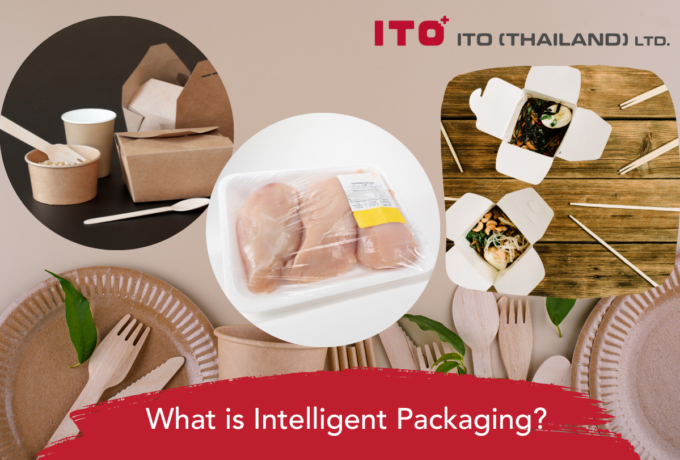
Intelligent Packaging
Without packaging, food products would last for only a short period of time, impossible for logistics management, difficulties in the supply chain system, quick quality deterioration, and prone to contamination to risky foodborne pathogens. In reality, there are many more functions that packaging is contributing to food products, as well as many types of smart packaging. Intelligent packaging is considered to be a part of smart packaging, so in this blog, we will discuss the contribution of intelligent packaging to food products.
-
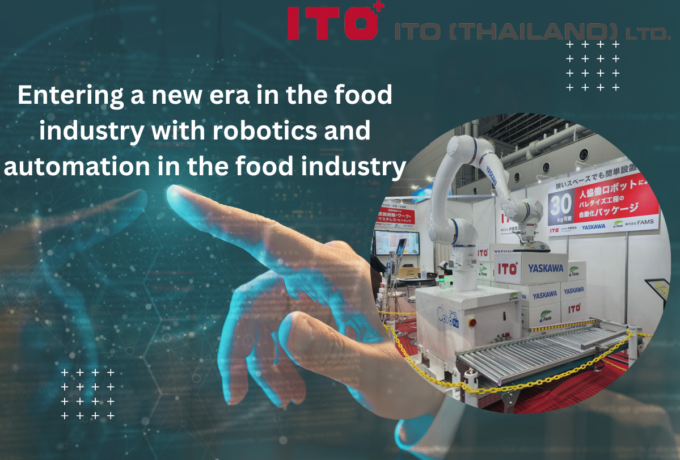
Robots & automation in the food industry
Entering a new era in the food industry with robotics and automation in the food industry
-
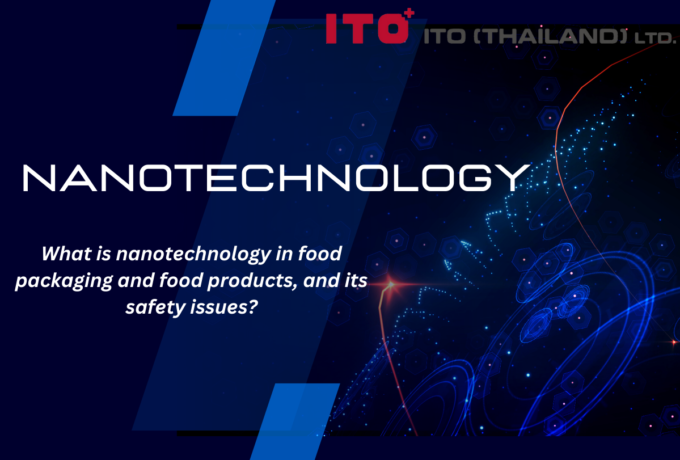
Nanotechnology in the Food Industry
Nanotechnology has been brought to our attention for the last decades, and it has provided various beneficial applications to the food industry. Unlike other technology, nanotechnology has broadened the knowledge in the food industry to another level in a nanoscale dimension. It involves almost every aspect of the food industry, including food packaging, food processing, as well as functional food development and enhancement of food safety. In this blog, we will discuss how nanotechnology is used in food packaging and food products, and the most important part, its safety issues.








